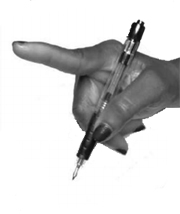DYT-ANO3 is a cervical isolated dystonia syndrome1.
Genetics
The majority of ANO3 variants were missense mutations2.
Mode of Inheritance
The condition is autosomal dominant; only heterozygous mutations have been described.
Clinical Presentation2
Median age at onset is 23 years, although there is also a peak in presentation in infancy.
Most patients have multifocal/segmental dystonia, focal or generalized distribution was less common. Cervical dystonia is the most common onset, followed by upper limb.
Axial dystonia is rare.
Dystonic tremor has been described as a key feature of this dystonia, appearing most commonly as head or arm tremor, and may precede the appearance of dystonic postures. Myoclonus is also found commonly.
Generalization has been described in approximately 10% of cases.
Treatment
Standard medical therapies for dystonia; deep brain stimulation is a treatment option.

